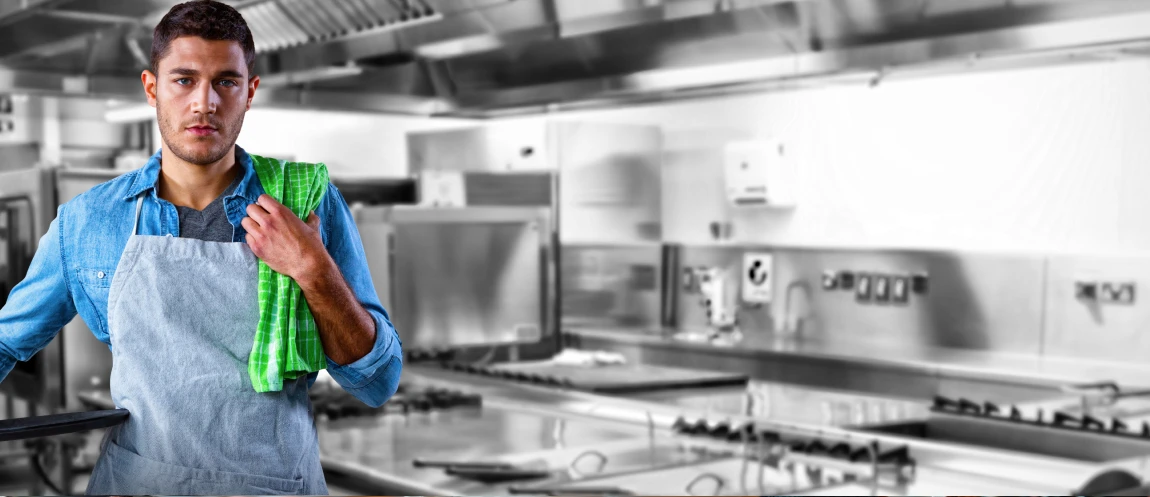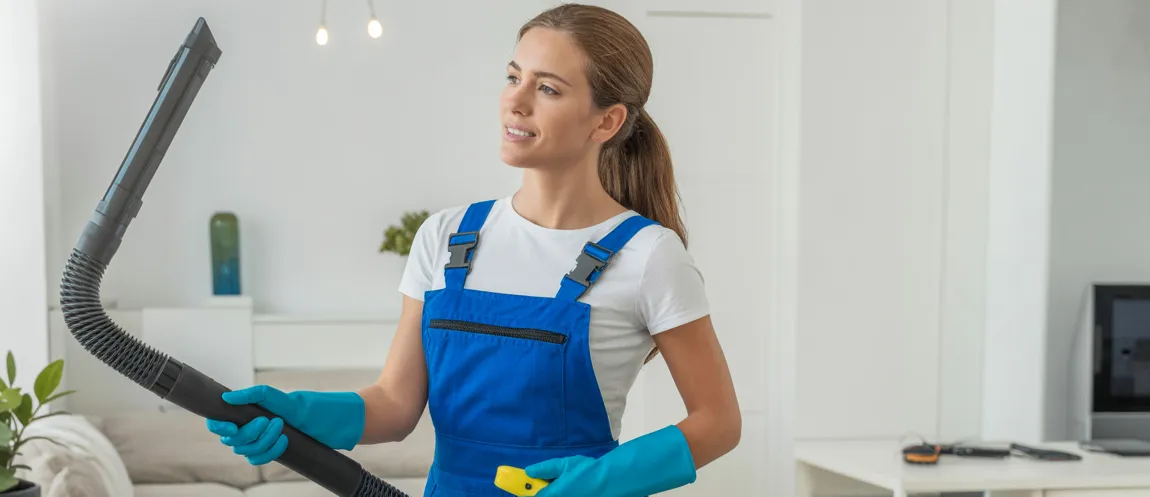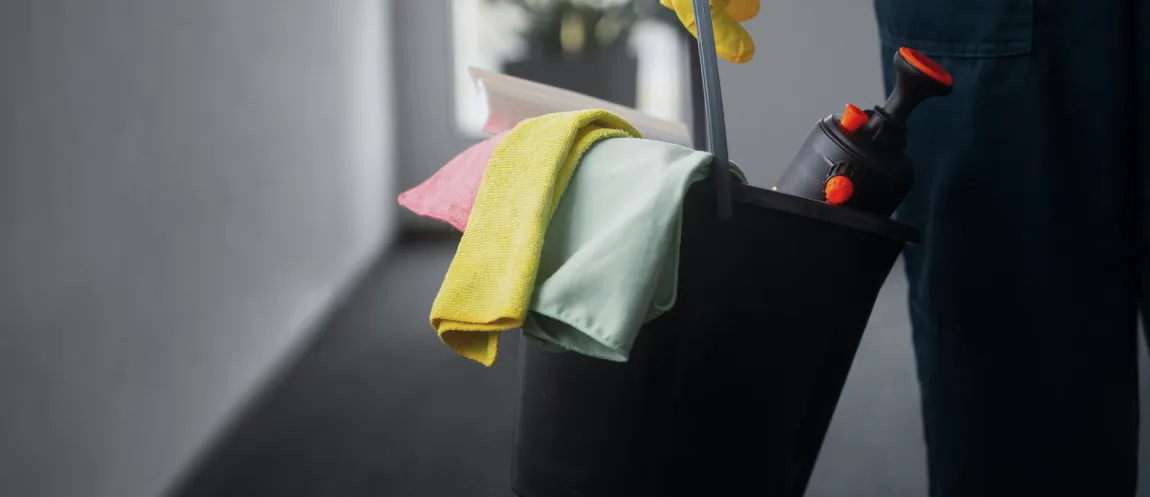A clean kitchen isn’t just a requirement, it’s the foundation of a successful restaurant. From satisfied customers to passing health inspections, hygiene has a direct impact on both reputation and revenue. In a bustling kitchen, where grease, spills, and waste pile up fast, maintaining cleanliness takes more than a daily mop.
Here’s how to maintain spotless standards and keep your kitchen inspection-ready every day.
Prioritize Clean Zones and Flow
Organize your space into zones: preparation, cooking, storage, and dishwashing, and assign cleaning responsibilities accordingly. This creates a flow that reduces cross-contamination and builds consistency.
- Preparation Areas: These surfaces touch almost every ingredient. Clean and sanitize after each shift.
- Cooking Stations: Wipe down grills, ovens, and fryers regularly. Don’t let grease build up, it’s a fire risk as much as a cleanliness issue.
- Storage Units: Refrigerators and dry pantries should be cleaned weekly, with expired stock tossed and spills removed.
- Dish Areas: Regularly descale dishwashers and clean sinks to prevent bacteria buildup and unpleasant odors.
Make Sanitization Non-Negotiable
Cleaning removes dirt. Sanitizing kills germs. Both are necessary, especially in food service.
- Use food-safe sanitizers that comply with health department standards.
- Disinfect all high-touch surfaces, handles, knobs, switches, multiple times daily.
- Ensure staff are trained on contact times for sanitizing agents to be effective.
Build a Daily, Weekly, and Monthly Checklist
A clear, structured cleaning schedule helps track what’s been done and what’s pending. Use printed charts or digital tools, whichever suits your workflow better.
Daily:
- Sweep and mop floors
- Sanitize prep surfaces
- Take out trash and disinfect bins
Weekly:
- Clean oven interiors and hoods
- Wipe down refrigerator coils
- Wash walls and doors
Monthly:
- Deep clean grease traps
- Pressure wash floor drains
- Inspect pest control measures
Train the Team, Not Just the Leaders
Hygiene is everyone’s responsibility. Even part-time or seasonal staff should be trained in your restaurant’s cleaning protocols.
- Offer quick refreshers during team meetings.
- Post visual reminders above sinks and in break rooms.
- Reward consistency, it encourages accountability.
When everyone understands why cleaning matters, they’re more likely to follow through even when things get hectic.
Use the Right Tools & Maintain Them
Dirty tools can sabotage clean work. Always ensure cleaning equipment is itself clean and in good condition.
- Replace mops and scrubbers regularly.
- Use color-coded clothes to separate food and non-food zones.
- Store chemicals properly and label everything clearly.
Professional restaurant cleaning services often emphasize tool hygiene because it’s often where DIY systems fall short.
Schedule Professional Deep Cleaning
Even the most efficient in-house crew needs support sometimes. Engaging professional restaurant cleaning services regularly ensures those hard-to-reach areas stay spotless, including vents, ducts, tile grout, and behind equipment.
This not only keeps your kitchen safe but also extends the life of your appliances and reduces fire risks.
Watch for Warning Signs
Small signs can point to big issues:
- Persistent smells despite surface cleaning
- Grease collecting on walls or ceilings
- Flies or pests in hidden corners
- Staff skipping log entries on checklists
Tackle these early before they escalate. It could save your kitchen from an expensive inspection violation or worse.
Keep it Legal, Follow Health Code Standards
Each region has its health code regulations, but there are universal practices that every restaurant must observe. Regular inspections are not just about avoiding fines, they help identify blind spots in your system.
Maintaining a documented cleaning routine shows transparency and commitment to safety. Health inspectors appreciate proactive businesses.
Clean kitchens don’t happen by accident. They’re the result of intentional routines, staff accountability, and professional support when needed. For those harder jobs or recurring deep cleans, restaurant cleaning services like DLL Cleaning Services can step in with precision and efficiency.
Need help keeping your kitchen spotless and health-code compliant? Contact DLL Cleaning Services today and bring professional-grade cleanliness to your restaurant.
FAQs
What are the most commonly missed areas during restaurant cleaning?
Ceiling vents, underneath fryers, behind refrigerators, and floor drains are often overlooked. These areas can harbor grease, bacteria, and pests if not cleaned regularly.
How often should a commercial kitchen be deep-cleaned?
A deep cleaning is recommended at least once a month, depending on kitchen volume. High-traffic restaurants may need bi-weekly deep cleaning.
Are daily checklists necessary in a restaurant kitchen?
Yes. Daily checklists help ensure no tasks are forgotten during busy hours and hold team members accountable for their roles.
Why is sanitizing different from cleaning in restaurants?
Cleaning removes visible dirt. Sanitizing uses chemicals to kill bacteria and viruses, especially on surfaces where food is prepared or handled.
Do all restaurants need professional cleaning services?
Not always, but professional services offer deep cleaning tools and expertise beyond typical in-house routines. They’re ideal for periodic support or tough jobs.




